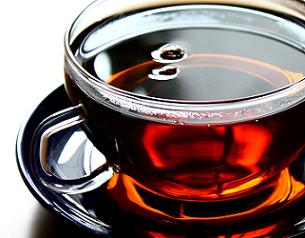Due to its compelling image as an innovative yet accessible beverage that is good tasting, good for you, and budget friendly, tea has remained profitable, with 2% annual gains in 2008 and 2009, according to Tea and Ready-to-Drink (RTD) Tea in the U.S.: Retail, Foodservice and Consumer Trends, by market research publisher Packaged Facts.
Over the next several years, tea’s health halo will gradually return the market to the double-digit gains it experienced prior to the recession, particularly as additional research solidifies tea’s healthful and functional properties. Packaged Facts estimates the U.S. market for tea sold through retail and foodservice channels at $9 billion in 2009, forecasting a 5% increase in 2010.
Steadily rising annual percentage gains are projected through 2014, when growth will reach 10% and sales will exceed $12billion.
Consumers also flock to tea due to the high quality of the beverage. Many new product introductions in the tea category include exotic flavoured teas, tea and fruit infusions, and premium loose tea bags that are at the forefront of innovations in both the retail and foodservice arenas.
“Tea’s healthfulness is still, of course, the beverage’s primary appeal, but in the current market environment consumers are increasingly recognising good quality, customised tea as a comforting, affordable premium beverage splurge,” says Don Montuori, publisher of Packaged Facts.
Additional factors driving overall market growth will be the greater involvement of international beverage behemoths including Coca-Cola, PepsiCo and Nestlé; a greater emphasis on tea in the foodservice channel via expansion of specialty brews into restaurants of all kinds, as well as coffee/tea chains à la Starbucks and Peet’s Coffee & Tea; hybrid tea beverages crossing over into competitive categories including sparkling water, energy drinks and superfruit juices; and the additional penetration of RTD teas into convenience channels including convenience stores and alternative outlets such as bookstores.
Emerging tea segments include the increasing specialisation of drinkers for flavours such as yerba mate and Kombucha; and an upswing in fair trade and other “ethical” appeals. Social marketing via non-traditional media like Facebook and Twitter; and a strong tea push in the convenience store channel by marketers and operators alike have all been part of the positive figure results.
Although the economic recession has clearly affected the U.S. tea market, slowing previously double-digit sales growth in the pricier RTD segment while slightly lifting sales in the more affordable bags/loose tea segment, tea’s appeal as an “affordable luxury” and its compelling image as a healthy product have kept sales in the black when many other CPG categories have seen declines.
Moreover, considering the 2005-2009 period overall, sales have done well, and as the economic picture brightens the recession may turn out to have a silver lining in that it has compelled tea marketers to innovate along value-added lines likely to continue to resonate well with consumers in the years ahead.
Tea and Ready-to-Drink (RTD) Tea in the U.S. examines the market for tea across the retail and foodservice spectrum, including ready-to-drink tea, leaf (bagged and loose) tea, and instant tea. The report provides historical sales figures and projections through 2014, in addition to examining market drivers and trends.
An exclusive feature of this report is custom survey data from Packaged Facts’ February 2009 online poll of 2,600 U.S. adults, which was conducted to measure purchasing patterns, attitudes and demographics specific to tea and other functional foods and beverages.
Drilling down to the brand level, the analysis also relies on consumer survey data from Experian Simmons’ Spring 2009 National Consumer Study to chart consumer demographic and psychographic trends, Information Resources, Inc. InfoScan Review data tracking product sales in mass-market channels, and wholesale data from leading natural/specialty channel distributor United Natural Foods, Inc. (UNFI) to quantify sales and market shares of natural and specialty products.
Which innovations in the RTD category can lead to the longer-term success manufacturers seek? Share your thoughts on what resonates well with consumers using the form below:

